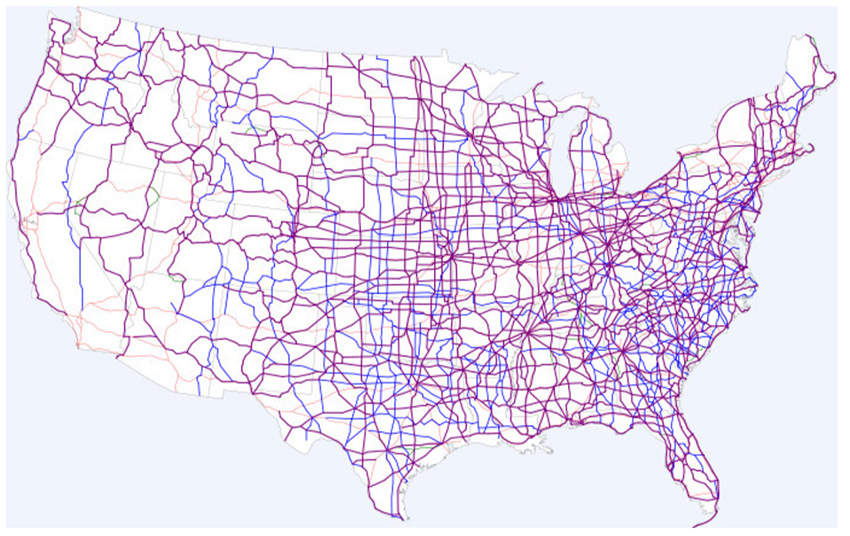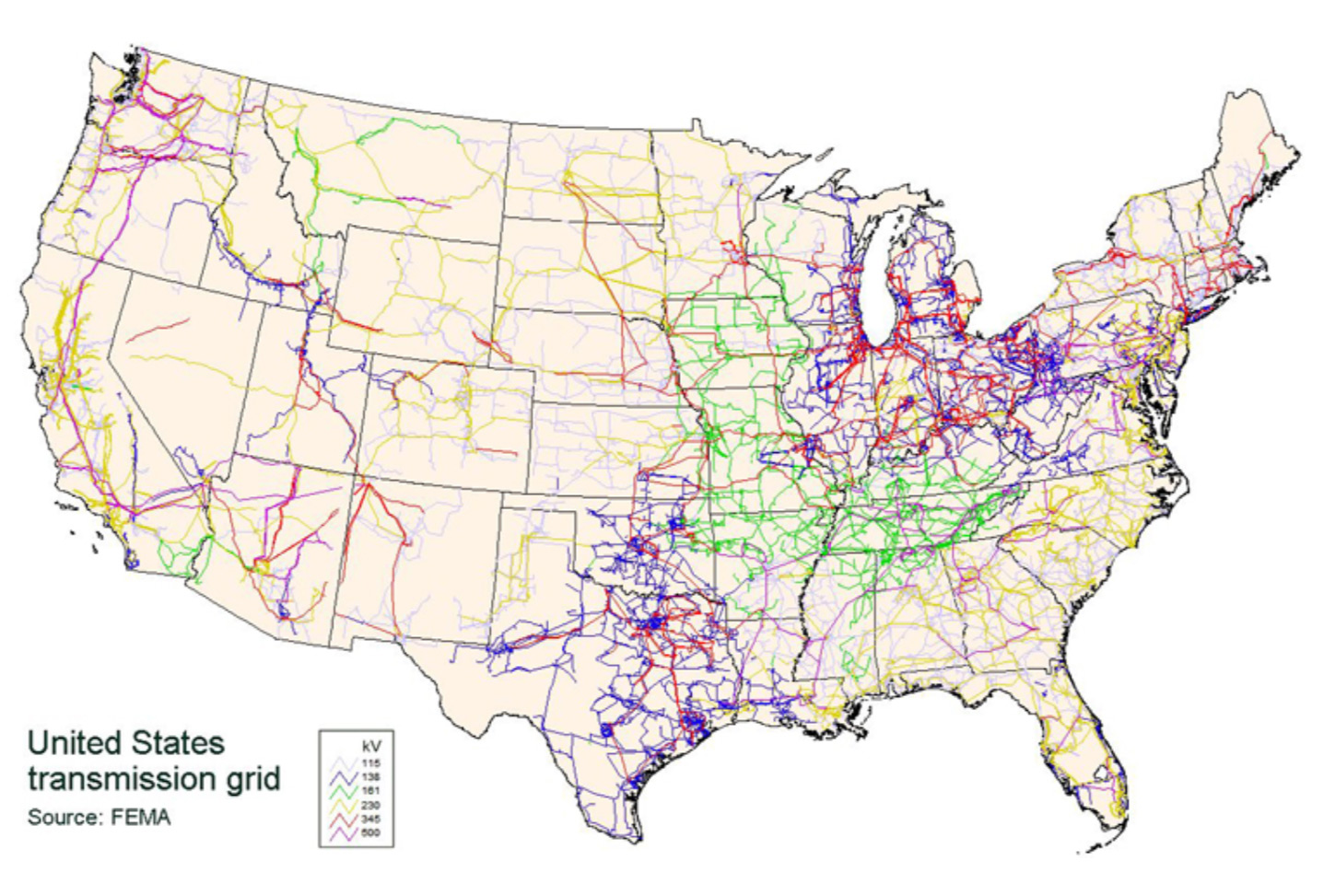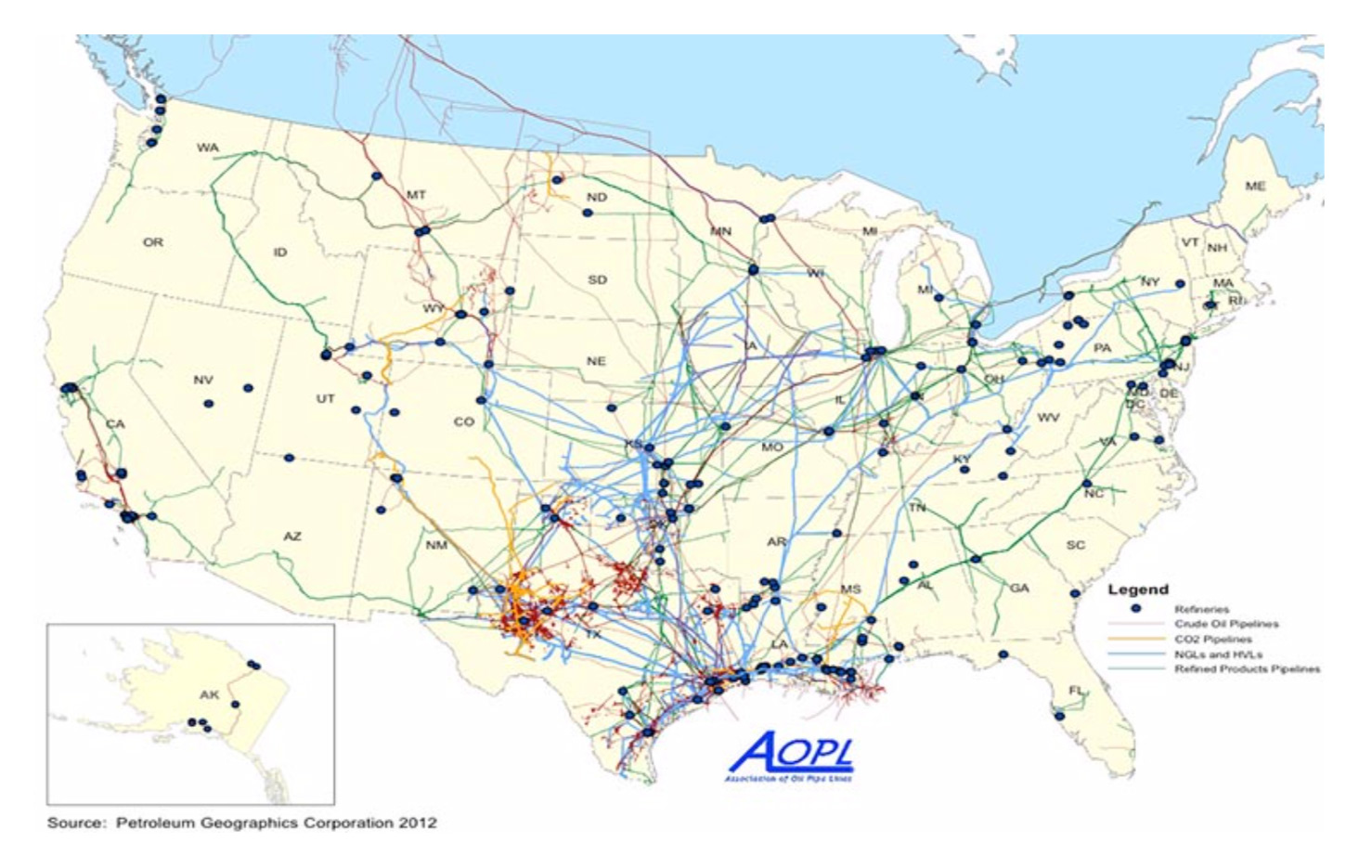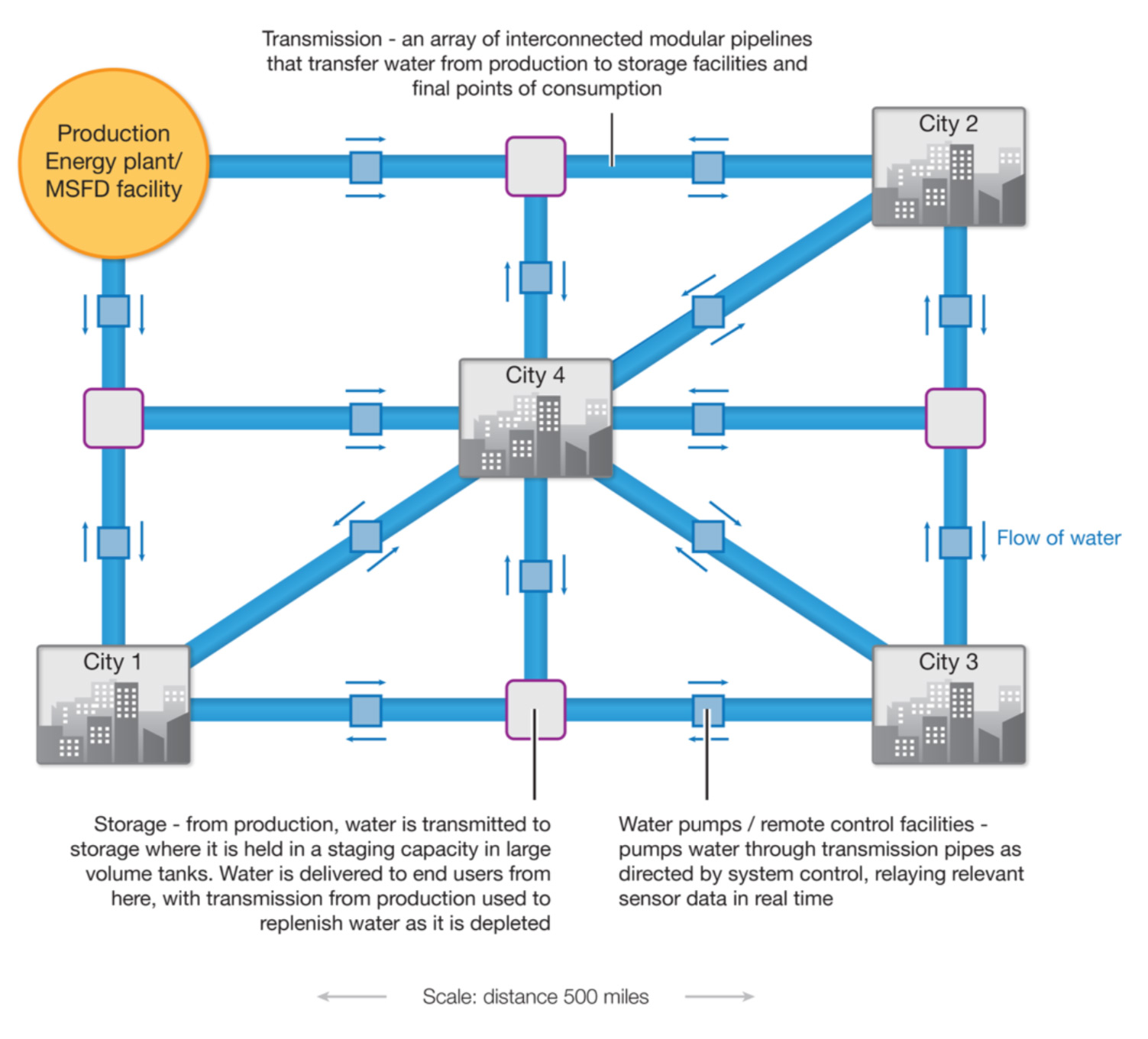So far, the Scarcity Zero framework enables production of three out of five critical resources: electricity, water and fuel. But while electricity and fuel can be transported relatively easily, water is a different story. We might be able to leverage Multi-Stage Flash Distillation technology to produce a lot of water at the coasts, but how do we get it inland?
Scarcity Zero’s proposed answer to that question is the National Aqueduct, a system that arguably functions as the heart of the framework. In concept, it’s a nationwide array of modular, above-ground pipelines and storage facilities intended to transport billions of gallons of water to any location in the country. In function, it serves four critical roles:
- Completely solve drought and water scarcity anywhere the network serves.
- Operate as a fourth energy source alongside renewable-integrated cities, LFTRs and CHP Plants.
- Serve as a gigantic nationwide battery for renewable energy.
- Provide endless, sustainable irrigation for agriculture and synthetic material production.
Thanks to three things we’ve been perfecting for the past 50 years: oil pipelines, high-voltage power lines and interstate highway networks, not only do we have the free space and wherewithal to build this system, we’ve already built it for other substances – at higher stakes and with higher difficulties. To elaborate, consider a series of three images. First, if you recall from Chapter Two, we see that our nation has a highway system connecting nearly every area of our country:

Second, consider a map of nationwide power transmission lines:

Third, consider a map of nationwide fossil fuel pipelines and refinery networks:

From these maps, we can derive two important conclusions:
- Highways and high voltage power lines give us plenty of free space to run water pipelines. Our road networks provide ample open space to install solar panels while removing the requirement to buy land, as this land is generally owned by public services that have exclusive authority to build on them.
Roads and highways also have clearance at each side and tend to be flat and straight – a trait usually shared by high voltage power line networks. This gives us thousands of miles of open, unused space to build a National Aqueduct. As this space has been cleared of potential obstructions beforehand, construction in these locations has far fewer obstacles than commercial land parcels.
Additionally, their close proximity to power systems (either integrated renewables, LFTRs or CHP Plants) gives the National Aqueduct plenty of energy to power sensors, pump stations, purification mechanisms and heating elements to help keep water hot. This hot water functionally acts as a “battery” – further discussed in the next chapter – and the potential energy stored within it can be harnessed alongside pipeline-mounted solar panels and turbines to generate immense electricity.
- Running water pipelines is feasible. We know that the National Aqueduct will work as described because we’ve already built a similar network of pipelines for fossil fuels today. Our nation has thousands of miles of oil pipelines that already work in the same way as water pipelines would in this context, and oil pipes are necessarily built to a higher environmental standard than we would need with water.
Water pipelines can come factory prefabricated and be designed for rapid, modular construction. Environmental risks are reduced, as the only substance a leaking water pipeline would spill is fresh water. In tandem, modular deployment and lower environmental risk would allow us to build a water pipeline network at a lower overall cost than with oil pipelines. We can also use the lessons we’ve learned with oil pipelines to get a head start, as the expertise needed to plan and build such a pipeline network already exists.
Much of the work involved with developing a National Aqueduct has already been done for us in terms of research and development, engineering, and methods of implementation. But to have the National Aqueduct accomplish its intended goals and meet our needs in full, we’ll need to establish a few requirements for the system:
Efficiency, reliability and affordability: Humanity has a fresh water requirement of trillions of gallons a year. While Scarcity Zero is capable of producing that much water in abstract, delivering it with any effectiveness must be efficient and inexpensive. A water delivery system must also be reliable, as any given industry or city can’t depend on an external water source if its reliability is questionable.
Scale of delivery: Whatever system we use to transport fresh water must work over thousands of miles, as water must be delivered from the coasts to areas deep inland. And as the land we have to work with isn’t flat with consistently warm weather, this system must also be deployable over varied terrain and climates – especially cold climates.
Control of operation: A water delivery system must be locally controlled, as a centralized control structure would be incapable of efficiently managing the water requirements of every agricultural and population center throughout the country. There must also be redundancy in the system – for example, allowing a city in the central United States to receive water from multiple routes in case one becomes incapacitated by some unforeseen event, such as a tornado or earthquake. This calls for a “smart” system approach that would have the ability to both monitor and manage how water is distributed from the point of desalination to the final point of consumption – both locally, regionally and nationwide.
Modular construction and ease of maintenance: Modularity is essential to ideal system design, providing benefits and cost savings in terms of construction time, standardization, reliability and maintenance. Any system to transport water would have to meet these standards by allowing its components to be installed and/or replaced rapidly by design.
To meet all of these requirements, the National Aqueduct would be made of a “smart grid” of above-ground pipelines, storage tanks, and pump stations that would transport desalinated fresh water from the coast to any area inland. These pipelines would feature interior turbines and exterior solar panels that would generate electricity, a portion of which would then be used to keep the water supply hot to thermoelectrically generate power at night. If built, the National Aqueduct would enable us to provide for our national fresh water needs without having to rely on local water sources ever again.
That statement is worth repeating: The National Aqueduct, in conjunction with CHP Plants, would allow us to have unlimited fresh water. And that water would never need to come from the ground, a lake, or a river, unless we wanted it to. This would give natural water sources time to replenish, decreasing much if not all of the drought impact we’ve been experiencing as of late and benefiting the environment as a whole.
The National Aqueduct’s system consists of four primary components: production, transmission, storage and control:
